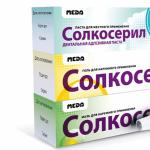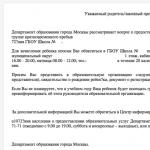Burning cotton. Determining the type of fabric fibers by external signs
10.03.2017
The composition determines all the properties of the material, and therefore of future clothing. Typically, manufacturers indicate the type and percentage of fibers. But it won’t hurt to know how you can determine the structure of the fabric yourself. After all, it is not always possible to familiarize yourself with the markings, and cases of distortion of information about the material are not excluded.
What determines the composition of a fabric?
Proper determination of fabric composition plays an important role in choosing fabric for sewing. It depends on:
- purpose of the fabric
- cost of material,
- sewing technology,
- choice of style,
- features of care of the finished product.
For clothes intended for summer and winter seasons, daily wear and holiday occasions are selected different kinds fabrics. Items in contact with skin must contain a large number of natural fibers, provide a pleasant feeling, comfortable conditions for ventilation. Outerwear protects against cold - in this case, the thermal insulation and waterproof properties of the material are important. For everyday products, practicality and wear resistance, etc. are important. Knowing the composition of textiles, you can accurately determine its purpose and choose the optimal style.
All fabrics have certain requirements for sewing technology. The specifics of the cut, the choice of needles, threads, and seams depend on the content of different types of fibers. Accurate information allows you to ensure ease of use and high quality results.
Tactile determination of fabric composition
Information about the composition is placed on the labels. Manufacturers, indicating this data, arrange the types of fibers based on their content in the material, from higher to lower values. For example, this one is 60% wool, 30% cotton and 10% polyester. However, if it is impossible to get acquainted with such information, you can try to determine the type of fabric using tactile sensations:
- silk has tenderness, softness, the hand glides over the surface;
- cotton gives a feeling of warmth, is pleasant to the touch, soft, wrinkles easily;
- linen is much stiffer and creates a feeling of coolness;
- the wool gives a slight tingling sensation, warmth, and practically does not wrinkle;
- viscose has a pleasant shine, is soft, delicate, and wrinkles to the touch;
- Nylon, polyester, nylon have a slippery surface, and the material crumbles when cut.
Determination of composition by combustion
The range of fabrics is huge. It is difficult to accurately determine the composition by tactile sensations, and especially to identify the presence of synthetic fibers in mixed versions. The nature of the tissue combustion and the odor emanating from it will help in studying the composition. To determine the type of fiber, you need to pull the thread out of the fabric and set it on fire:
- cotton and linen fibers burn intensely, the flame has a yellowish color, can sparkle, after combustion there remains ash without lumps, which smells like burnt paper;
- the burning of wool and silk is less intense, a ball of dark color remains, when touched it crumbles, the smell of burnt hair is felt;
- the burning of viscose is similar to that observed when burning cotton, but this material burns out much faster;
- When acetate and triacetate fibers burn, a vinegar smell appears, flames yellow color, the resulting lump can be easily crushed with your fingers;
- the lavsan (or polyester) thread burns slowly, soot appears, and a hard ball remains;
- when nylon fibers are set on fire, the smell of sealing wax is felt, white smoke is visible, and a hard dark lump remains;
- polyvinyl chloride thread does not burn, it chars, emitting a chlorine odor;
- Nitron fiber burns in flashes, black soot is released, and a lump remains that can be crushed with your fingers.
Materials can be made from mixed fibers. When burning such filaments, the type of flame and odors depend on the predominant component. It should be taken into account that after burning natural fibers, only ash remains. If there are hard lumps in it, then the fabric contains synthetic impurities.
In order to get a more detailed understanding of the behavior of fabrics of different compositions during combustion, we created the section #burn on our YouTube channel. Join us and enjoy watching!)
Nylon is a polyamide fiber.
- Nylon is a strong fiber (45 – 70 CH/tex).
· In terms of strength it is second only to glass. When wet, the strength does not decrease (10 - 15%).
· Elongation is 20-25%, when wet it increases by 3-5%.
· Elasticity is a distinctive feature of p/a fibers: with small tensile forces, the reverse deformation of nylon is 90-95% of the total elongation.
· Nylon is characterized by very high resistance to abrasion and repeated deformation. The abrasion resistance of nylon is taken as 100%.
· The heat resistance of nylon is low t=65 0 C, t 100-110 0 C.
· The light resistance of nylon is also insufficient; to increase heat and light resistance, stabilizers are added to the composition of polyamides.
· Chemoresistant. Withstands acids and alkalis up to medium concentrations.
· Resistant to microorganisms.
The disadvantages of nylon include low hygroscopicity (4-5%), reduced adhesion, poor colorability, increased rigidity and electrification.
Combustion . When brought to the flame, it melts, then lights up with a weak bluish-yellow flame, spreading white smoke and the smell of sealing wax. When removed from the flame, the combustion stops and a solid gray ball solidifies at the end.
MODIFICATIONS OF P/A FIBERS
SHELON-1– is a profiled thread with a complex cross-sectional shape, which makes it possible to create open channels (capillaries) and porosity in the thread. This thread structure significantly improves its hygroscopic properties. Fabrics made from Shelon-1 threads are close in their properties to fabrics from natural silk. Products made from them are pleasant to wear and do not cause skin irritation, because... porous fiber provides good ventilation.
TRILOBAL– physically modified complex-profile polyamide thread. Gives products softness, silkiness, increased porosity, which increases the breathability and moisture conductivity of materials.
CAPRYLON AND MEGALON– chemically modified polya fibers, which are obtained by side grafting of a copolymer containing hydroxylone groups. Such fibers are close to cotton in hygroscopicity (5-7%) and surpass it in strength and abrasion resistance. The susceptibility of fibers to dyes is increased.
LAVSAN
Lavsan – polyester fiber
The starting material for its production, polyethylene terephthalate, is a product of the interaction of dimethyl terephthalate and ethylene glycol.
- Lavsan is a strong fiber. The breaking load of conventional fibers reaches 40-50 CH/tex. When wet, the strength remains virtually unchanged.
- The elongation is 20-25%.
- The fibers are highly elastic: when stretched up to 5-6%, the elongation is completely reversible, so lavsan fabrics do not wrinkle after washing and cleaning. Lavsan is the most elastic fiber.
- Lavsan is highly resistant to abrasion (second only to polyamide fibers).
- The fiber is resistant to light. It is also positive that when exposed to light, products made from polyethylene fibers do not change their color to the same extent as others.
- The fiber is heat-resistant, t=180 0 C, tto=140-160 0 C.
- Resistance to acids and oxidizing agents is higher for polyester fibers than for polyamide fibers. However, the fibers are not sufficiently resistant to alkalis, especially when heated.
- Lavsan has a slight shrinkage, so the products have a stable shape.
- Has high dielectric properties.
- Resistant to microorganisms.
DISADVANTAGES: low hygroscopicity (0.5%), high electrification, poor paintability, pilling.
Combustion : When brought to a flame, it shrinks, melts, then ignites. Burns with a calm yellowish flame with the release of black soot. A hard black ball hardens at the end.
MODIFICATIONS: complex-profile polyethylene thread shelon-2.
NITRON
Nitron – polyacrylonitrile fiber (PAN). It is obtained mainly in the form of staple fiber.
Nitron is a very light, soft, wool-like fiber that has low thermal conductivity, the indicators of which are close to the thermal conductivity of wool. Nitron is inert to pollutants, so products are easy to clean.
· Nitron – strong fiber (32-39 CH/tex). Due to low hygroscopicity in the wet state, strength almost does not lose (2-5%).
· Elongation depends on the degree of drawing and ranges from 16 to 35%.
· Good elastic properties.
· Nitron is the most light-resistant fiber. After a year of aging in the open air, nitron retains 80% of its strength, and cotton - 5%.
· Heat resistance 180 0 C, t WTO = 140-160 0 C.
· The fiber is resistant to microorganisms and is not damaged by moths.
· Nitron is resistant to oxidizing agents and organic acids, but unstable to concentrated solutions of alkalis and inorganic acids.
Disadvantages include:
· Low hygroscopicity (2%).
· Poor colorability.
· Low abrasion resistance.
· Significant electrification and pillability.
Combustion : When brought to the flame, it first shrinks, melts, then burns intensely, in flashes, releasing a large amount of black soot. After the combustion stops, an irregularly shaped influx remains.
Compared to other synthetic fibers, nitron has the advantage of being easy to modify, which makes it possible to give them specific properties over a wide range: dyeability with dyes of various classes, antistatic, non-flammable, porous, transparent, increased strength, stable crimp, adhesion (scaly fibers), etc. d.
CHLORINE
Chlorine refers to polyvinyl chloride fibers. The raw material is vinyl chloride, obtained from ethylene or acetylene by saturating them with chlorine.
Chlorine differs from other chemical fibers in its lack of shine.
· Less durable than others synthetic fibers. When wet, the strength does not decrease.
· Elasticity is lower than other synthetic fibers.
· Low heat resistance (t=70 0 C), when heated to t=90-100 0 C, the fiber begins to deform.
· Low light fastness.
· Non-hygroscopic fiber (0.1%).
· High chemical resistance. Chlorine is the most chemical-resistant fiber (dissolves in chloroform and perchlorethylene).
Combustion The fiber is non-flammable. When brought to the flame, it shrinks greatly, chars, but does not burn, and emits the smell of chlorine.
Application
1. Therapeutic underwear for patients with rheumatism and radiculitis (since chlorine is capable of accumulating electrical charges on its surface).
2. Overalls for workers in the chemical industry (since the fiber is very chemical resistant).
3. Overalls for fishermen and foresters (since chlorine is resistant to microorganisms and does not absorb water).
VINOL
Vinol belongs to the class of polyvinyl alcohol fibers.
Polyvinyl alcohol fibers are produced in small quantities. They are produced in the form of staples (for household products), high-strength threads for technical purposes and special-purpose fibers - water-soluble, ion-exchange, bactericidal.
· A special feature of vinol is its high hygroscopicity (8%), due to the large number of hydroxyl groups, and good colorability.
· Vinol is a strong fiber (30-40 CH/tex).
· Elongation of regular staple fiber is 30-35%.
· Satisfactory elastic properties.
· High abrasion resistance (vinol is second only to polyamide fibers in this indicator).
· Heat-resistant fiber (t=180 0 C). Withstands boiling washing, hot ironing, and dries quickly.
· Thermal conductivity is close to wool.
· Light fastness is good.
· Under the influence of water, strength decreases by 15-25%.
· Resistant to alkalis, but strength decreases when heated.
· Dissolves in concentrated acid solutions in the cold.
When introduced into the flame, it shrinks, then burns with a yellowish flame. After the combustion stops, a solid influx of light brown color remains.
SPANDEX (LYCRA)
Spandex is a polyurethane fiber.
Distinctive feature polyurethane threads – their high elasticity (elongation at break can be 800%). When elongated by 300%, the proportion of elastic elongation is 92-98%. Polyurethane threads give textile materials high elasticity, resilience, dimensional stability, and wrinkle resistance. They are highly resistant to abrasion, mold and sweat, are easy to paint, and are resistant to chemicals and light weather.
However, spandex fibers have a low breaking load, are not hygroscopic (0.8-0.9%), and have low heat resistance (80-100 0 C). When heated to 150 0 C, thermal destruction begins, the threads turn yellow, and their rigidity increases.
They burn like lavsan.
Application. Polyurethane threads are used to make elastic fabrics and knitwear. They act as frame rods around which threads from other fibers are wound.
Hi all. I very often heard questions of the following kind: is this calico made of natural cotton Or is this cotton fabric natural? Of course, these questions do not arise out of nowhere, especially in our difficult times, where on every corner they offer a fake at the price of a natural product. After such questions, I felt the desire to write an article, thanks to which attackers will have much less chance of deceiving you.
1.
2.
3.
4.
A little about cotton and cotton fabrics.
Cotton is an environmentally friendly product.
Cotton, and, as a result, natural cotton fabric themselves are a natural and environmentally friendly product. Such famous types of fabrics as calico are made from cotton, and at the same time, they may differ in price. It's all about the varying complexity of production. The cost can vary from 1000 rubles to 10,000 thousand or more. Agree, I would not want to buy satin for 5-6 thousand rubles, which is made from synthetics and is not worth even a fifth of this money. That is why we read on and gain useful knowledge. By the way, I would like to point out that cotton and cotton fabric are the same thing.
9 ways to identify a natural cotton product from a synthetic counterfeit.
Now let's talk directly about how to distinguish synthetics from high-quality cotton. There are various methods, some are quite easy to use, we will analyze them first, some are more difficult.Regardless of the method, I advise you to first look at the product tag. According to all rules and laws, the manufacturer is obliged to write the truth on the product label. However, if you have any doubts about the authenticity of the product, we proceed to check.

Easy ways to spot a fake “without leaving the cash register”:
- 1st method: definition product weight . Any cotton product is quite heavy. Everything here is hidden in cotton fibers; they are much heavier than synthetic ones. If you take a set of bed linen, the same density, then underwear made from natural cotton will be much heavier than synthetics. Pay close attention to this, the usual weight of a set of cotton bed linen ranges from 1.9 – 2.5 kg, while a set of synthetics weighs 0.5 – 1 kg.
- 2nd method: electrification. Electrification is the property of a material to accumulate a static charge. Simply put, if you rub synthetic fabric, it will crackle and glow in the dark. Cotton fabric will never behave like this; from the point of view of electrification, it is neutral.
- 3rd method: definition by touch. Cotton fabrics are very soft to the touch and quickly take on body temperature, i.e. become warm. In turn, synthetic fabrics always remain cold.
- 4th method: shine. Cotton fabrics are naturally non-shiny. This property is inherent in synthetic fabrics. However, there is an exception in the form of satin; for this fabric this advice will not be relevant. Due to its weaving and twisting of the threads, there is still a slight shine on it, however, other types of fabrics are calico, poplin, etc. do not shine and you can safely use this method.
- 5th method: creasing. Crumple a piece of fabric; if it turns out to be cotton, it will crumple quite badly; synthetic fabric practically does not wrinkle and regains its shape very quickly.
- 6th method: price. The cost indicator can give an excellent hint when choosing a quality cotton product. If you see a set of cotton satin bed linen in a store for 600 - 800 rubles, you should know that it is a fake. High-quality satin bed linen cannot cost that much. The right decision will compare the price in two or three different stores and formulate for yourself the average price for a certain type of fabric. After this, take into account the average cost, and do not chase for “super”cheap price. Remember, the miser pays twice!
The beauty of the methods listed above is that they allow you to identify a fake at the purchase stage. Remember them and don't forget to apply them.Now let's talk about more complex methods. They themselves are of course not complicated, but at the purchasing stage you most likely won’t be able to use them.
- 7th method: combustion. Cotton fabrics, when burned, emit the smell of burnt paper, and after burning they leave ash. Synthetic fabrics in turn, they do not burn, but smolder and leave their own specific smell.
- 8th method: pellets. Cotton fabric never forms unpleasant pills during use, which cannot be said about synthetics. Look at your old cotton clothes and you will see this. By the way, you can try to apply this method at the purchasing stage; even new synthetic fabric forms a few pills if you stroke it a little and look closely.
- 9th method: drying after washing. Natural bed linen cotton fabric After washing it dries much longer than any synthetic material.
Two latest methods are 100% in determining the naturalness of the product, but, most likely, not a single seller will allow you to use them at the purchase stage. And as a rule, you can use them after purchase.
Let's summarize.
This is where I will end my article. Be more careful when choosing bedding or cotton fabrics. Use all the voiced methods, choose the best. If you have extensive experience in identifying natural cotton fabric, I and all readers will be glad to hear them. Leave your tips in the comments. Don't forget to repost.Sincerely, Victoria Morozova.
Clothing made from linen fabric is especially valued by wearers due to its breathability, wear resistance, smooth surface, hygroscopicity and fairly high strength. The best method to verify the authenticity of the material is a laboratory test. But this method requires considerable time and money. Therefore, when buying clothes or household items, it is better to resort to offline methods.


Methods for identifying linen fabric
Visual. Linen material has a shiny appearance, while cotton fabrics have a matte surface.
Tactile. Linen fabrics are quite stiff and cause a slight chill when in contact with the body.
To break. To conduct the study, it is necessary to remove the thread and break it. The linen thread will have a pointed appearance. In the case of cotton, a fluffy tassel of short and even fibers remains at the end of the thread.
Crumpling. Take the thread in your hand and close it into a fist for a few seconds. Linen thread produces more folds compared to cotton thread.
Combustion. Light the fabric and wait a few seconds. Linen-based material emits virtually no odor, while cotton smokes and has a strong odor.
Color. Natural linen fabrics without dyes are available in three variations - ivory, light brown bark and shades of gray.
Find out more information about the properties of flax, as well as others natural materials, you can contact the company’s specialists “ Vulcana».
There are a number of ways. Of course, the most reliable method is the laboratory method. It includes microscopic and chemical analyses. However, most often we have to resort to the organic method - determining the fabric by eye, touch, crumpling, stretching, tearing, burning.
By appearance linen fabric more shiny, cotton - matte.
The threads of the cotton fabric are even, while the threads of the linen fabric are thickened in places.
To the touch: linen fabric is more rigid, and when applied to naked body gives a feeling of cold.
For crumpling: linen fabric produces stiff folds that are difficult to straighten out. Linen fabric has almost no stretch either in the warp or in the weft, while cotton fabric stretches in the weft.
For thread break: Linen will have pointed ends, while cotton fabric will have fluffy and smooth ends.
For combustion: Linen fabric gives off almost no odor, and when cotton fabric burns, a sharp fire and acrid smoke are released.
In the same way, one can unmistakably distinguish natural silk from artificial And wool from wool mixture and mixed fabrics.

Approximately: artificial silk has a sharp metallic sheen, while natural silk has a soft matte finish.
To the touch: artificial silk is hard, while natural silk is soft. Wool fabrics Depending on the nature of the fiber and its structure, it can be very soft, semi-coarse or coarse.
For crumpling: artificial silk produces a stiff fold that does not straighten out easily. Wool fabrics are the most resilient and elastic. Pure wool fabrics are soft and, once wrinkled, straighten out slowly and completely. Semi-coarse and coarse pure wool fabrics - after crumpling, they give quick and sharp straightening.
To break: natural silk breaks with difficulty, but artificial silk breaks easily, especially when moistened, when it loses up to 70% of its strength. When a thread of artificial silk breaks, it crumbles into separate fibers, while threads of natural silk break off evenly, without crumbling. Wool thread It does not tear immediately, but first stretches significantly.

For combustion: natural silk is sintered into a ball and goes out, while artificial silk burns out completely. When the wool burns, it sticks together into a ball, goes out, and smells like burnt horn. If the light runs along the thread with the same smell of horn, this is a clear sign of the presence plant fibers or artificial silk. If the thread burns down to 1-2 cm and then goes out, also emitting a characteristic odor, then the presence of plant fibers or artificial silk makes up a significant percentage.
Wool blends for crushing and stretching do not give the same indicators as those inherent in fabrics made from pure wool.






